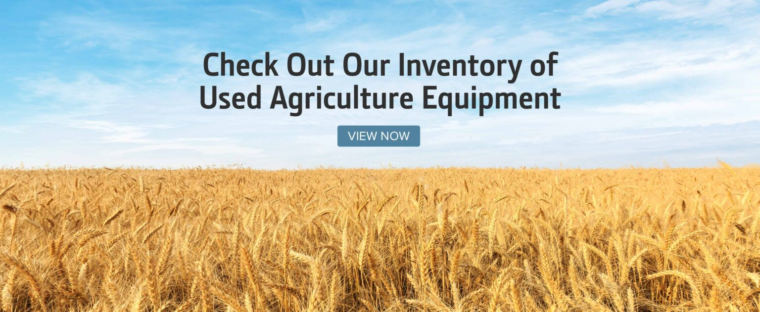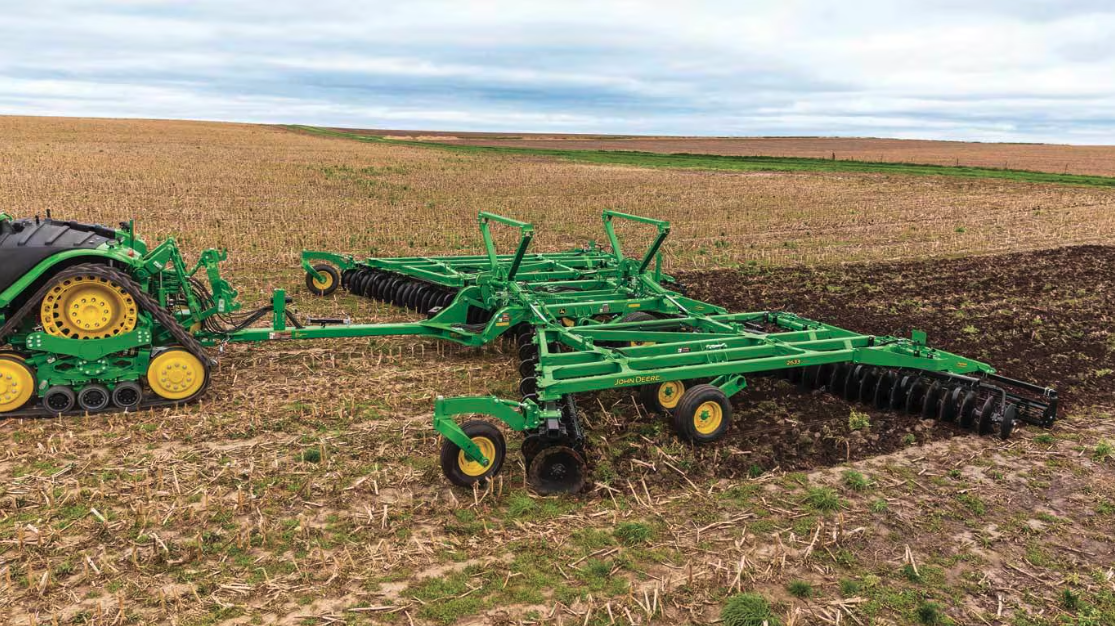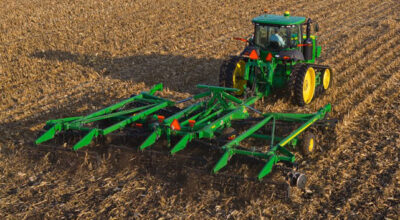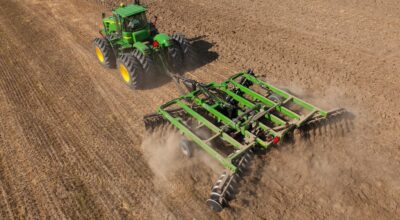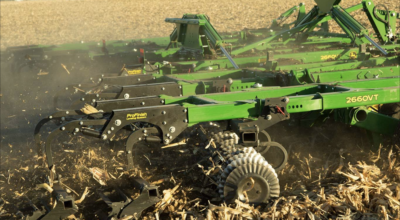Proper tillage can be essential for maintaining soil health and providing the foundation for strong, productive crops. By breaking up compaction and incorporating organic matter, tillage plays a crucial role in enhancing seed-to-soil contact and ensuring even distribution of nutrients.
The right approach to tillage—and the right tools—can significantly improve overall soil health, creating optimal growing conditions for crops.
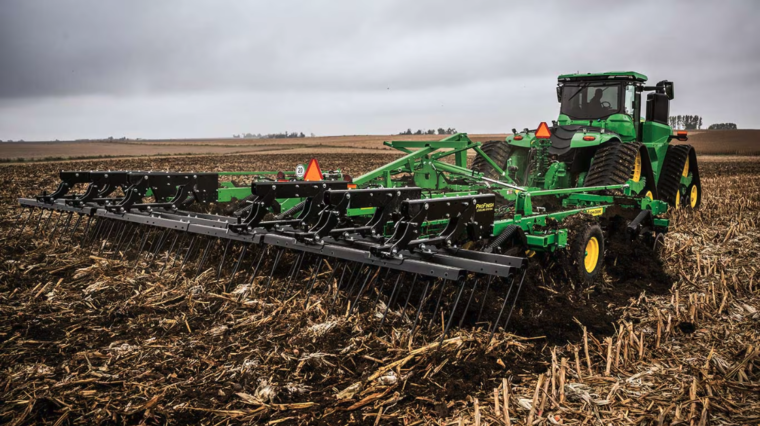
Read on to learn more about the innovative equipment in John Deere’s tillage lineup and how it helps farmers manage soil effectively.
Understanding Soil Health
Healthy soil is a living ecosystem rich in microorganisms, organic matter, and nutrients. It influences water infiltration, root development, and nutrient uptake—all crucial for crop productivity. By prioritizing soil health, farmers can manage erosion, reduce nutrient runoff, and enhance resilience to extreme weather.
The Role of Tillage in Soil Management
Tillage is an essential task in soil management, helping to break up compacted soil, incorporate crop residues, and prepare seedbeds. However, excessive or incorrect tillage can lead to problems such as erosion, loss of organic matter, and increased compaction.
Using the right tillage tools at the right time makes all the difference. John Deere’s equipment is designed to strike that balance, helping farmers improve soil health while avoiding the pitfalls of over-tillage.
Overview of John Deere’s Tillage Equipment
John Deere’s expanded lineup of tillage equipment is designed to meet diverse farming needs. Each tool is engineered to solve specific soil challenges. Here are just a few examples:
- Vertical tillage equipment helps reduce compaction and improve seed-to-soil contact.
- Disks effectively cut through heavy crop residue to prepare fields for planting.
- Field cultivators are ideal for seedbed preparation and weed control.
- Chisel plows break up hardpan layers and improve soil aeration.
- Rippers penetrate deep into the soil to alleviate compaction and improve drainage, promoting better root growth and nutrient uptake.
With adjustable blade angles and variable depths, all John Deere tools can be customized to suit different soil types and field conditions. Whether you need to prepare a smooth seedbed, manage weeds, or incorporate cover crops, this lineup offers the right equipment to keep your soil healthy and your fields ready for the next growing season.
Top Benefits of Using John Deere Tillage Equipment
John Deere’s tillage equipment offers a range of benefits that can significantly improve soil health and boost productivity. Here, we highlight some of the key advantages farmers can expect from using these advanced tools:
Improved Soil Structure
John Deere tillage tools help break up compacted soil, improving aeration and allowing roots to grow deeper and absorb more nutrients. Healthier roots lead to stronger, more resilient crops, capable of accessing water and nutrients more efficiently and thriving under challenging conditions.
Effective Residue Management
John Deere tillage tools are designed to evenly distribute crop residue, helping you build healthy organic matter in your soil. Besides reducing pest pressure, this even distribution also helps maintain a clean seedbed, minimizing potential issues during planting and promoting better early crop development.
Reduced Erosion
Conservation tillage practices minimize soil disturbance and reduce erosion. John Deere equipment enables these practices, helping maintain protective soil cover, ensuring valuable topsoil stays in place, and preserving field productivity for the long term.
Better Water Infiltration
John Deere tillage tools improve soil porosity, allowing water to penetrate more easily. This both reduces runoff and keeps moisture available to crops during dry periods. Better water infiltration also means less standing water, which lowers disease risks and creates optimal conditions for root growth.
Success Story: How Healthy Soil Helped a South Dakota Farm
Brian Thompson, a farmer in South Dakota, was struggling with compacted soil, which restricted root growth and led to lower yields. Thompson decided to incorporate John Deere’s vertical tillage system to address these challenges. By breaking up the compaction, they were able to significantly improve the overall soil structure, allowing roots to penetrate deeper and access essential nutrients.
Within one season, Thompson saw significant improvements. He reported a substantial increase in yields as water infiltration and nutrient availability improved. This transformation highlights how the right tillage equipment, like John Deere’s vertical tillage tools, can effectively enhance soil health and boost productivity.
Best Practices for Using John Deere Tillage Equipment
To get the most out of John Deere’s tillage equipment, it’s important to follow a few best practices. These guidelines will help you optimize soil health while minimizing any potential negative effects:
Timing Matters
Avoid tilling when soil is too wet or too dry, as this can damage soil structure. Does your soil crumble easily when squeezed? That’s a sign it’s at the optimal moisture level for tilling.
Set the Right Depth
Different soils need different tillage depths. Adjusting the depth to match your field conditions helps prevent unnecessary compaction and erosion.
Rotate Tillage Practices
Don’t use the same tillage method every year. Rotating practices helps with maintaining soil structure and prevents compaction.
Why John Deere Tillage Equipment Is the Right Choice for Your Soil
Investing in quality tillage equipment is key to maintaining healthy soil and boosting yields. John Deere’s tillage lineup offers the tools needed to address specific soil challenges, ensuring healthier fields and more productive crops.
Prepare for a productive growing season with John Deere tillage equipment. Visit our dealer locator to find a certified dealer near you.
